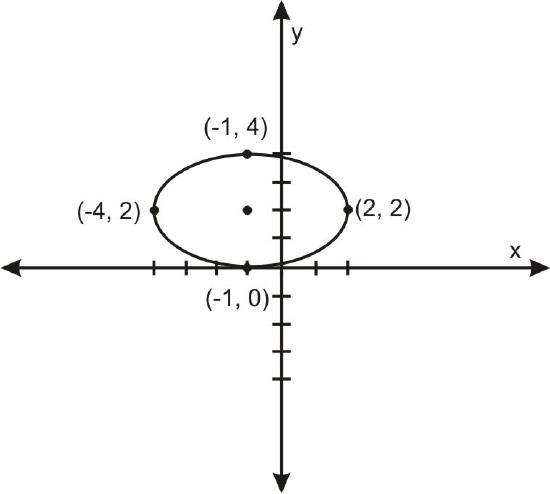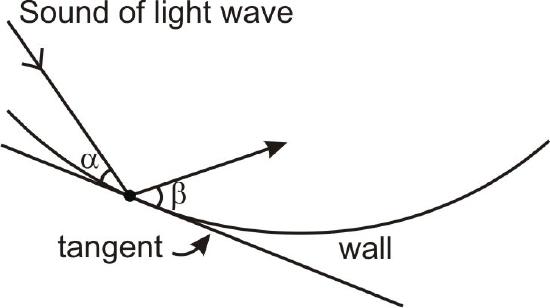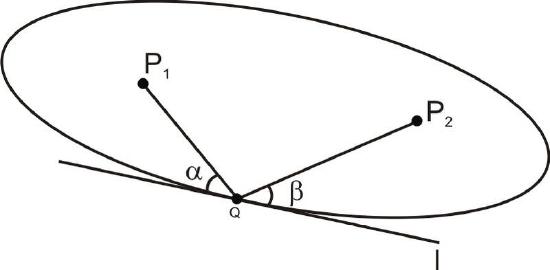6.1.4: Focal Property of Ellipses
- Page ID
- 14750
\( \newcommand{\vecs}[1]{\overset { \scriptstyle \rightharpoonup} {\mathbf{#1}} } \)
\( \newcommand{\vecd}[1]{\overset{-\!-\!\rightharpoonup}{\vphantom{a}\smash {#1}}} \)
\( \newcommand{\dsum}{\displaystyle\sum\limits} \)
\( \newcommand{\dint}{\displaystyle\int\limits} \)
\( \newcommand{\dlim}{\displaystyle\lim\limits} \)
\( \newcommand{\id}{\mathrm{id}}\) \( \newcommand{\Span}{\mathrm{span}}\)
( \newcommand{\kernel}{\mathrm{null}\,}\) \( \newcommand{\range}{\mathrm{range}\,}\)
\( \newcommand{\RealPart}{\mathrm{Re}}\) \( \newcommand{\ImaginaryPart}{\mathrm{Im}}\)
\( \newcommand{\Argument}{\mathrm{Arg}}\) \( \newcommand{\norm}[1]{\| #1 \|}\)
\( \newcommand{\inner}[2]{\langle #1, #2 \rangle}\)
\( \newcommand{\Span}{\mathrm{span}}\)
\( \newcommand{\id}{\mathrm{id}}\)
\( \newcommand{\Span}{\mathrm{span}}\)
\( \newcommand{\kernel}{\mathrm{null}\,}\)
\( \newcommand{\range}{\mathrm{range}\,}\)
\( \newcommand{\RealPart}{\mathrm{Re}}\)
\( \newcommand{\ImaginaryPart}{\mathrm{Im}}\)
\( \newcommand{\Argument}{\mathrm{Arg}}\)
\( \newcommand{\norm}[1]{\| #1 \|}\)
\( \newcommand{\inner}[2]{\langle #1, #2 \rangle}\)
\( \newcommand{\Span}{\mathrm{span}}\) \( \newcommand{\AA}{\unicode[.8,0]{x212B}}\)
\( \newcommand{\vectorA}[1]{\vec{#1}} % arrow\)
\( \newcommand{\vectorAt}[1]{\vec{\text{#1}}} % arrow\)
\( \newcommand{\vectorB}[1]{\overset { \scriptstyle \rightharpoonup} {\mathbf{#1}} } \)
\( \newcommand{\vectorC}[1]{\textbf{#1}} \)
\( \newcommand{\vectorD}[1]{\overrightarrow{#1}} \)
\( \newcommand{\vectorDt}[1]{\overrightarrow{\text{#1}}} \)
\( \newcommand{\vectE}[1]{\overset{-\!-\!\rightharpoonup}{\vphantom{a}\smash{\mathbf {#1}}}} \)
\( \newcommand{\vecs}[1]{\overset { \scriptstyle \rightharpoonup} {\mathbf{#1}} } \)
\( \newcommand{\vecd}[1]{\overset{-\!-\!\rightharpoonup}{\vphantom{a}\smash {#1}}} \)
\(\newcommand{\avec}{\mathbf a}\) \(\newcommand{\bvec}{\mathbf b}\) \(\newcommand{\cvec}{\mathbf c}\) \(\newcommand{\dvec}{\mathbf d}\) \(\newcommand{\dtil}{\widetilde{\mathbf d}}\) \(\newcommand{\evec}{\mathbf e}\) \(\newcommand{\fvec}{\mathbf f}\) \(\newcommand{\nvec}{\mathbf n}\) \(\newcommand{\pvec}{\mathbf p}\) \(\newcommand{\qvec}{\mathbf q}\) \(\newcommand{\svec}{\mathbf s}\) \(\newcommand{\tvec}{\mathbf t}\) \(\newcommand{\uvec}{\mathbf u}\) \(\newcommand{\vvec}{\mathbf v}\) \(\newcommand{\wvec}{\mathbf w}\) \(\newcommand{\xvec}{\mathbf x}\) \(\newcommand{\yvec}{\mathbf y}\) \(\newcommand{\zvec}{\mathbf z}\) \(\newcommand{\rvec}{\mathbf r}\) \(\newcommand{\mvec}{\mathbf m}\) \(\newcommand{\zerovec}{\mathbf 0}\) \(\newcommand{\onevec}{\mathbf 1}\) \(\newcommand{\real}{\mathbb R}\) \(\newcommand{\twovec}[2]{\left[\begin{array}{r}#1 \\ #2 \end{array}\right]}\) \(\newcommand{\ctwovec}[2]{\left[\begin{array}{c}#1 \\ #2 \end{array}\right]}\) \(\newcommand{\threevec}[3]{\left[\begin{array}{r}#1 \\ #2 \\ #3 \end{array}\right]}\) \(\newcommand{\cthreevec}[3]{\left[\begin{array}{c}#1 \\ #2 \\ #3 \end{array}\right]}\) \(\newcommand{\fourvec}[4]{\left[\begin{array}{r}#1 \\ #2 \\ #3 \\ #4 \end{array}\right]}\) \(\newcommand{\cfourvec}[4]{\left[\begin{array}{c}#1 \\ #2 \\ #3 \\ #4 \end{array}\right]}\) \(\newcommand{\fivevec}[5]{\left[\begin{array}{r}#1 \\ #2 \\ #3 \\ #4 \\ #5 \\ \end{array}\right]}\) \(\newcommand{\cfivevec}[5]{\left[\begin{array}{c}#1 \\ #2 \\ #3 \\ #4 \\ #5 \\ \end{array}\right]}\) \(\newcommand{\mattwo}[4]{\left[\begin{array}{rr}#1 \amp #2 \\ #3 \amp #4 \\ \end{array}\right]}\) \(\newcommand{\laspan}[1]{\text{Span}\{#1\}}\) \(\newcommand{\bcal}{\cal B}\) \(\newcommand{\ccal}{\cal C}\) \(\newcommand{\scal}{\cal S}\) \(\newcommand{\wcal}{\cal W}\) \(\newcommand{\ecal}{\cal E}\) \(\newcommand{\coords}[2]{\left\{#1\right\}_{#2}}\) \(\newcommand{\gray}[1]{\color{gray}{#1}}\) \(\newcommand{\lgray}[1]{\color{lightgray}{#1}}\) \(\newcommand{\rank}{\operatorname{rank}}\) \(\newcommand{\row}{\text{Row}}\) \(\newcommand{\col}{\text{Col}}\) \(\renewcommand{\row}{\text{Row}}\) \(\newcommand{\nul}{\text{Nul}}\) \(\newcommand{\var}{\text{Var}}\) \(\newcommand{\corr}{\text{corr}}\) \(\newcommand{\len}[1]{\left|#1\right|}\) \(\newcommand{\bbar}{\overline{\bvec}}\) \(\newcommand{\bhat}{\widehat{\bvec}}\) \(\newcommand{\bperp}{\bvec^\perp}\) \(\newcommand{\xhat}{\widehat{\xvec}}\) \(\newcommand{\vhat}{\widehat{\vvec}}\) \(\newcommand{\uhat}{\widehat{\uvec}}\) \(\newcommand{\what}{\widehat{\wvec}}\) \(\newcommand{\Sighat}{\widehat{\Sigma}}\) \(\newcommand{\lt}{<}\) \(\newcommand{\gt}{>}\) \(\newcommand{\amp}{&}\) \(\definecolor{fillinmathshade}{gray}{0.9}\)Focal Property of Ellipses
In 1602, the astronomer Johannes Kepler was working on a problem for his boss Tycho Brahe. He was continuing a centuries-old study trying to devise a formula that could calculate the orbits of the planets, specifically Mars in this case. He worked for years on the problem with the most advanced technology of the time, but was never satisfied with the results as they were never truly accurate or reliable.
To simplify his calculations, he hit upon the concept that a planet sweeps out equal areas of space (in a pie-slice shaped figure with the sun at the tip) in equal amounts of time, despite differences in the distance of the planet from the sun.
For the next three years he attempted to design the perfect equation to describe an orbit which would fit this and other observations he was using.
Finally, in 1605, he realized that he had the answer. His realization/discovery would firmly place him as one of the most famous scientists of all time.
What did he realize?
Focal Property of Ellipses
Ellipses Not Centered at the Origin
To find an equation for ellipses centered around another point, say \(\ (h, k)\), simply replace \(\ x\) with \(\ x−h\) and \(\ y\) with \(\ y−k\). This will shift all the points of the ellipse to the right \(\ h\) units (or left if \(\ h<0\)) and to up \(\ k\) units (or down if \(\ k<0\)). So the general form for a horizontally- or vertically-oriented ellipse is:
\(\ \frac{(x-h)^{2}}{a^{2}}+\frac{(y-k)^{2}}{b^{2}}=1\)
It is centered about the point \(\ (h,k)\). If \(\ b<a\), the ellipse is horizontally oriented and has foci \(\ \left(h+\sqrt{a^{2}-b^{2}}, k\right)\) and \(\ \left(h-\sqrt{a^{2}-b^{2}}, k\right)\) on its horizontal major axis. If \(\ a<b\), it is vertically oriented and has foci \(\ \left(h, k+\sqrt{a^{2}-b^{2}}\right)\) and \(\ \left(h, k-\sqrt{a^{2}-b^{2}}\right)\) on its vertical major axis.
Examples
Earlier, you were asked a question about the problem that astronomer Johannes Kepler was working on for his boss, Tycho Brahe.
Solution
Kepler's realization was that, even though he had deliberately avoided them for a very long time because they were so simple, ellipses were the perfect shape to make all of his calculations come together.
When a planet orbits the sun (or when any object orbits any other), it takes an elliptical path and the sun lies at one of the two foci of the ellipse. Kepler's laws regarding planetary motion are accurate enough to produce modern computations which are still used to predict the motion of artificial satellites today.

Explain why subtracting \(\ h\) from the \(\ x\)−term and \(\ k\) from the \(\ y\)−term in the equation for an ellipse shifts the ellipse \(\ h\) horizontally and \(\ k\) vertically.
Solution
If \(\ (x,y)\) is a solution to \(\ \frac{(x-h)^{2}}{a^{2}}+\frac{(y-k)^{2}}{b^{2}}=1\)
then \(\ (x+h, y+k)\) is a solution to \(\ \frac{(x-h)^{2}}{a^{2}}+\frac{(y-k)^{2}}{b^{2}}=1\)
This produces a graph that is shifted horizontally by \(\ h\) and vertically by \(\ k\).
Graph the equation \(\ 4 x^{2}+8 x+9 y^{2}-36 y+4=0\).
Solution
We need to get the equation into the form of general equation above. The first step is to group all the \(\ x\) terms and \(\ y\) terms, factor our the leading coefficients of \(\ x^{2}\) and \(\ y^{2}\), and move the constants to the other side of the equation:
\(\ 4\left(x^{2}+2 x\right)+9\left(y^{2}-4 y\right)=-4\)
Now, we “complete the square” by adding the appropriate terms to the \(\ x\) expressions and the \(\ y\) expressions to make a perfect square.
\(\ 4\left(x^{2}+2 x+1\right)+9\left(y^{2}-4 y+4\right)=-4+4+36\)
Now we factor and divide by the coefficients to get:
\(\ \frac{(x+1)^{2}}{9}+\frac{(y-2)^{2}}{4}=1\)
And there we have it. Once it’s in this form, we see this is an ellipse is centered around the point (-1,2), it has a horizontal major axis of length 3 and a vertical minor axis of length 2, and from this we can make a sketch of the ellipse:

The National Statuary Hall in the United States Capital Building is an example of an ellipse-shaped room, sometimes called an “echo room”, which provide an interesting application to a property of ellipses. If a person whispers very quietly at one of the foci, the sound echoes in a way such that a person at the other focus can often hear them very clearly. Rumor has it that John Quincy Adams took advantage of this property to eavesdrop on conversations in this room.
How do Echo Rooms work? What does the elliptical shape of the room have to do with it?
Solution
The property of ellipses that makes echo rooms work is called the “optical property.” So why echoes, if this is an optical property? Well, light rays and sound waves bounce around in similar ways. In particular, they both bounce off walls at equal angles. In the diagram below, \(\ α=β\).

For a curved wall, they bounce at equal angles to the tangent line at that point:

So the “optical property” of ellipses is that lines between a point on the ellipse and the two foci form equal angles to the tangent at that point, or in other words, whispers coming from one foci bounce directly to the other foci. In the diagram below, for each \(\ Q\) on the ellipse, \(\ \angle \alpha \cong \angle \beta\).

Though planets take an elliptical path around the sun, these ellipses often have a very low eccentricity, meaning they are close to being circles. The diagram above exaggerates the elliptical shape of a planet’s orbit. The Earth’s orbit has an eccentricity of 0.0167. Its minimum distance from the sun is 146 million km. What is its maximum distance from the sun? If the sun’s diameter is 1.4 million kilometers, do both foci of the Earth’s orbit lie within the sun?
Solution
Recall that the eccentricity of an ellipse is \(\ \varepsilon=\frac{\sqrt{a^{2}-b^{2}}}{a}\)
Assume that the orbit of the sun is an ellipse centered at (0,0). Then we can use the distance from the origin to the focus \(\ \sqrt{a^{2}-b^{2}}\) to set up the equations \(\ 146+146+2 \sqrt{a^{2}-b^{2}}=2 a\) and \(\ 0.167=\frac{\sqrt{a^{2}-b^{2}}}{a}\). Solving we get \(\ a=175.270, b=175.245\) and the distance from (0, 0) to the foci, \(\ c\)=2.927 (all units are in millions of km). Finally the maximum distance from the earth to the sun is approximately 152 million km. From Kepler’s law, we know one of the foci of its orbit is at the center of the sun. The other foci is 2(2.927)=5.854 million kilometers away, so it is outside the sun (but not by very far!)
What is the sum of the distances to the foci of the points on a vertically-oriented ellipse?
Solution
2b
Try to graph the ellipse: \(\ 3 x^{2}-12 x+5 y^{2}+10 y-3=0\). What goes wrong?
Solution
After completing the square, we have the sum of positive numbers equaling a negative number. This is an impossibility, so the equation has no solutions.
Graph the ellipse (plot points): \(\ 5 x^{2}-15 x-2 y^{2}+8 y-50=0\). What is different here? Explain what you think the graph of this equation might look like.
Solution
After completing the square, the \(\ x\) term and the \(\ y\) term are opposite signs. If you plot some points you will see that the graph has two disconnected sections. This class of conic sections will be discussed in the lesson on hyperbolas.
Review
Graph the following more advanced ellipses.
- \(\ (x)^{2}+\frac{(y+2)^{2}}{9}=1\)
- \(\ \frac{(x+2)^{2}}{4}+(y+2)^{2}=1\)
- \(\ \frac{(x+2)^{2}}{9}+(y)^{2}=1\)
- \(\ \frac{(x-1)^{2}}{9}+\frac{(y-4)^{2}}{16}=1\)
- \(\ 4(x-1)^{2}+9(y)^{2}=36\)
- \(\ (x+1)^{2}+\frac{(y-1)^{2}}{9}=1\)
- \(\ (x-4)^{2}+\frac{(y+3)^{2}}{16}=1\)
- \(\ \frac{(x)^{2}}{16}+\frac{(y)^{2}}{9}=1\)
- \(\ 4(x+1)^{2}+(y-3)^{2}=16\)
- \(\ (x+4)^{2}+\frac{(y-1)^{2}}{16}=1\)
Graph the following special-case ellipses.
- \(\ (x+4)^{2}+(y+2)^{2}=4\)
- \(\ (x+2)^{2}+(y)^{2}=16\)
- \(\ (x-3)^{2}+(y-2)^{2}=1\)
- \(\ (x+2)^{2}+(y-1)^{2}=9\)
- \(\ (x-3)^{2}+(y-1)^{2}=9\)
- What do these ellipses have in common?
Answer the following word problems.
- While the elliptical paths of planets are ellipses that are closely approximated by circles, comets and asteroids often have orbits that are ellipses with very high eccentricity. Halley’s comet has an eccentricity of 0.967, and comes within 54.6 million miles of the sun at its closest point, or “perihelion”. What is the furthest point it reaches from the sun?
- Calculate the area of an ellipse with the equation \(\ \frac{(x-h)^{2}}{a^{2}}+\frac{(y-k)^{2}}{b^{2}}=1\) (Hint: use a geometric argument starting with the area of a circle.)
- Design the largest possible echo room with the following constraints: You would like to spy on someone who will be 3 m from the tip of the ellipse. The room cannot be more than 100 m wide in any direction. How far from the person you’re spying on will you be standing?
- No matter what the orientation of a stick, if you trace out the path that the shadow of the tip makes on a flat surface, you will find it is an ellipse. Describe why this is true.
Resources
" frameborder="0" height="450px" name="92213" src="https://www.ck12.org/flx/show/video/...icity-Overview" thumbnailurl="" title="VideoObject?hash=30acd2f0d8272541c1ce4d3f07362e1a" uploaddate="2016-07-12 20:22:16" width="80%">
Vocabulary
| Term | Definition |
|---|---|
| Completing the Square | Completing the square is a common method for rewriting quadratics. It refers to making a perfect square trinomial by adding the square of 1/2 of the coefficient of the x term. |
| Conic | Conic sections are those curves that can be created by the intersection of a double cone and a plane. They include circles, ellipses, parabolas, and hyperbolas. |
| Eccentricity | The eccentricity of a conic section is a measure of how much the conic section deviates from being circular. The eccentricity of circles is 0, the eccentricity of ellipses is between 0 and 1, the eccentricity of parabolas is 1, and the eccentricity of hyperbolas is greater than 1. For ellipses and hyperbolas, \(\ e=\frac{c}{a}\). |
| Ellipse | Ellipses are conic sections that look like elongated circles. An ellipse represents all locations in two dimensions that are the same distance from two specified points called foci. |
| Ellipses | Ellipses are conic sections that look like elongated circles. An ellipse represents all locations in two dimensions that are the same distance from two specified points called foci. |
| Foci | The foci of an ellipse are the two points that define the ellipse. The sum of the distances from any point on the ellipse to the foci is constant. |
| Major Axis | The major axis of an ellipse is the longest diameter of the ellipse. |
| minor axis | The minor axis of an ellipse is the shortest diameter of the ellipse. |
| standard form | The standard form of an ellipse centered at \(\ (h,k)\) is \(\ \frac{(x-h)^{2}}{a^{2}}+\frac{(y-k)^{2}}{b^{2}}=1\). |

